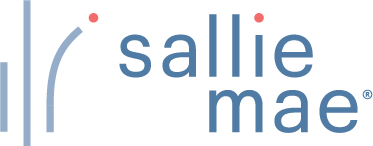NerdWallet’s Guide to Financial Aid Programs in Utah

Many or all of the products featured here are from our partners who compensate us. This influences which products we write about and where and how the product appears on a page. However, this does not influence our evaluations. Our opinions are our own. Here is a list of our partners and here's how we make money.
If you’re a resident of the Beehive State, you know how quickly Utah has grown and changed. According to the U.S. Census Bureau, Utah was the fastest-growing state from 2010 to 2020, reaching a population of 3.27 million people.
For families with children thinking about college, Utah has several well-known schools, including the University of Utah and Brigham Young University.
Whether you’re new to the state or have lived there all your life, you may be pleasantly surprised by the cost of higher education in Utah. And with the state’s financial aid programs, you may be able to reduce your expenses even more.
Student loans from our partners

on Sallie Mae
Sallie Mae
4.5
NerdWallet rating
4.5
NerdWallet rating4.5% - 15.49%
Mid-600's
on Sallie Mae
on College Ave
College Ave
5.0
NerdWallet rating5.0
NerdWallet rating4.07% - 15.48%
Mid-600s
on College Ave
on Ascent
Ascent
5.0
NerdWallet rating5.0
NerdWallet rating4.09% - 15.66%
Low-Mid 600s
on Ascent
The cost of education in Utah
Despite its rapid growth, Utah is still a relatively small state in terms of population and has a smaller number of colleges and universities than states with similar populations such as Arkansas, Kansas and Iowa. There are 22 public and private non-profit institutions in the state that issue two- or four-year degrees.
Generally, the cost of attending a four-year college in Utah is significantly cheaper than it is in other states. Here’s the total average cost of attendance in 2020-21 — including tuition, fees and room and board — for different education options in the state:
Public four-year school: The average cost for in-state residents at Utah’s public four-year schools was $14,653, about 31% less than the national average of $21,337.
Private non-profit: The average cost of attendance at private four-year schools in Utah was $15,911, about 65% less than the national average of $46,313.
Community college (in-state): The average cost of attendance — not including room and board — at community colleges for Utah residents was $3,989, about 14% higher than the national average.
Why are four-year schools, especially private colleges and universities, so inexpensive in Utah? Part of the reason is that the state offers several substantial financial aid programs that can make the cost more manageable, and the state's higher ed funding hasn’t decreased as significantly over the years as it has in other places.
Another contributing factor is the state’s large Mormon population; 55% of the adults in Utah are members of The Church of Jesus Christ of Latter-day Saints. Some of the private schools in the state, such as Brigham Young University and Ensign College, are affiliated with the Mormon church, and charge members half the tuition rate that non-members pay.
Financial aid options in Utah
To be eligible for in-state tuition rates and state-based financial aid, you must be a qualifying resident living in the state for at least 12 months before registering as an in-state student. You can prove residency with one of the following items:
Attended a Utah high school for the past 12 months.
Utah voter registration dated before the college application date.
A driver's license or identification card issued several months prior to the application date.
Vehicle registration prior to the application date.
Evidence of employment in the state prior to the application date.
Proof of payment of Utah state income taxes for the previous year.
A rental agreement showing the student’s name and Utah address for at least 12 months prior to their application date.
Utility bills showing the student’s name and Utah address for at least 12 months prior to their application date.
In Utah, undocumented students, including Deferred Action for Childhood Arrivals (DACA) students, are eligible for in-state tuition and state financial aid programs if they meet the other residency requirements. Students must also sign an affidavit stating that they will file an application to legalize their immigration status or be willing to file when they’re eligible.
Laws, requirements and financial aid programs can change. Visit the Utah System of Higher Education website or contact your college’s financial aid department for the most up-to-date details.
Utah does operate a number of programs that could make postsecondary education more affordable, including:
529 plans.
Grants.
Scholarships.
Tuition waivers.
Other financial aid programs.
Student loan repayment assistance.
529 plans
Although Utah doesn't offer a prepaid tuition plan, it does have a 529 option called my529. With a 529, you can open an account on behalf of a child and invest your contributions. The account grows tax-deferred and, if the withdrawals are used for qualifying education expenses, the withdrawals are also tax-free.
As an added benefit, Utah also allows residents to deduct a portion of their 529 contributions on their state income taxes as long as the account was set up before the beneficiary turned 19.
Utah’s my529 is attractive for those that live outside the state, too. Morningstar, an investment research company, issued Utah’s my529 a “gold distinction.” Utah’s my529 is one of just two 529 plans to earn this distinction in 2022, and it is the only plan that has held that distinction every year since Morningstar introduced its rating system in 2012. The gold rating highlights the quality of the plan’s investment options and low fees.
In-state tuition
Public schools are usually less expensive than private colleges. Nine schools are part of the Utah System of Higher Education (USHE):
Salt Lake Community College.
Snow College.
Southern Utah University.
University of Utah.
University of Utah Eastern.
Utah State University.
Utah Tech University.
Utah Valley University
Weber State University.
However, students who live in Utah could potentially attend school in another state and qualify for a lower tuition rate. Utah participates in tuition exchange programs through the Western Interstate Commission for Higher Education (WICHE). Through these programs, students can choose from over 160 participating schools in 15 member states plus U.S. Pacific Territories and Freely Associated States and pay no more than 150% of the resident tuition rate. The network is made up of the following places:
Alaska.
Arizona.
California.
Colorado.
Hawaii.
Idaho.
Montana.
Nevada.
New Mexico.
North Dakota.
Oregon.
South Dakota.
Utah.
Washington.
Wyoming.
U.S. Pacific Territories and Freely Associated States (Commonwealth of the Northern Mariana Islands, Guam, Republic of the Marshall Islands, Federated States of Micronesia, and Republic of Palau).
According to WICHE, the average annual savings per student was $11,294 for the 2022-23 academic year.
Utah grants
Grants are a valuable form of financial aid. They’re usually awarded based on the student’s financial need, and as long as the recipient meets the terms of the grant, the award doesn't need to be repaid. Utah operates four grant programs:
Veterans Tuition Gap Program
The Veterans Tuition Gap Program award is a supplemental award that covers the remaining cost of tuition, fees and textbooks for military veterans who have exhausted federal benefits. To qualify, you must be a Utah resident, a military veteran and enrolled in the final year of your first bachelor’s degree program.
Only students attending one of the following schools can qualify: Salt Lake Community College, Snow College, Southern Utah University, University of Utah, Utah State University, Utah Tech University, Utah Valley University or Weber State University.
Adult Learner Grant Program
For those who didn’t earn a degree right after high school, the Adult Learner Grant is a potential aid option. It provides financial assistance to adults age 26 or older enrolled in online programs in designated areas of need.
The award can be used to cover the cost of attendance at participating public and private colleges. Eligibility is determined by the information included on the Free Application for Federal Student Aid (FAFSA).
Public Safety Officer Career Advancement Reimbursement and Grant Programs
Students enrolled in criminal justice-related programs at public colleges may be eligible for the Public Safety Officer Career Advancement Reimbursement and Grant Programs. It provides up to $5,000 per year for up to eight years. To qualify, you must be currently employed by a Utah law enforcement agency.
Talent Development Award Program
Recent high school graduates and adults enrolled in eligible programs at participating schools may be eligible for the Talent Development Award Program. This program covers up to the cost of resident tuition, fees and books at select schools, including Salt Lake Community College, Southern Utah University, the University of Utah, Utah State University, Utah Tech University (formerly Dixie State), Utah Valley University and Weber State University.
Eligibility is based on the FAFSA, and the student must intend to work a qualifying job in Utah after graduation.
Utah scholarships
Scholarships, like grants, usually don't have to be repaid. Some scholarships take students’ finances into consideration, but most scholarships are based on merit. In Utah, there are several scholarships available from the state:
Opportunity Scholarship
Utah’s Opportunity Scholarship encourages high school students to complete advanced courses in core subjects while in high school. Students can apply for the scholarship during their senior year of high school, and selected students can receive up to $1,000 per semester for up to four semesters. Students are chosen based on their grade point averages and their performance in advanced courses.
Utah Promise Scholarship
The Utah Promise Scholarship is based on financial need, and it’s for both recent high school graduates and adult learners. The scholarship covers up to the cost of attendance for up to two years at public schools and select private colleges, including: Brigham Young University (Provo), Ensign College, Western Governors University and Westminster College.
Utah Technical College Scholarship
The Utah Technical College Scholarship is for students enrolled in technical education certificate programs in high-demand areas at select schools. It can help cover the cost of tuition, fees and required textbooks for up to 12 months after a student graduates from high school.
T.H. Bell Education Scholarship
The T.H. Bell Education Scholarship is a program for high school graduates and adult learners at select public and private schools who plan to pursue careers in education. The scholarship can pay for the cost of resident tuition, fees and textbooks for up to four years.
To qualify, students must be enrolled in an approved teaching program or an approved program that prepares students to become speech-language pathologists or other licensed professionals providing services in public schools to students with disabilities.
Students can attend programs at the following schools: Brigham Young University, Rocky Mountain University of Health Professionals, Salt Lake Community College, Snow College, Southern Utah University, University of Utah, Utah State University, Utah Tech University (formerly Dixie State), Utah Valley University, Weber State University, Western Governors University and Westminster College.
Olene S. Walker Transition to Adult Living (TAL) Scholarship
The TAL Scholarship is for students transitioning out of Utah’s foster care system or the unaccompanied refugee minor program to earn a postsecondary degree or credential at a Utah public school. Eligible full-time students can receive up to $5,000 per year.
Tuition waivers in Utah
There is one tuition waiver program in Utah and it’s for National Guard members. If you are a member of Utah’s National Guard, you can qualify for a full tuition waiver at a state college or university for up to two semesters.
Other financial aid programs
Outside of the USHE system, the University of Utah has a valuable program for Native American students.
Utah State University Native American Student Scholarship
This scholarship program for Native American students covers all tuition and school-required fees at any of the 30 Utah State University locations. To qualify, students must be members of a federally recognized tribe in and around Utah and seek a technical certificate, associate or bachelor’s degree.
Student loan repayment programs in Utah
Based on data from the Federal Student Aid office, the average student loan balance per borrower in Utah was $31,861.93 as of 2022 — about 8% less than the national average of $34,577.34.
Even though Utah borrowers tend to owe less money, the state offers three student loan repayment programs that can help graduates accelerate their repayment.
Utah Behavioral Health Workforce Reinvestment Initiative
Behavioral health professionals can qualify for up to $50,000 in loan repayment assistance through the Utah Behavioral Health Workforce Reinvestment Initiative. Participants must serve for at least three years at a qualifying publicly funded site in Utah. Eligible professionals include psychiatrists, psychiatric pharmacists, psychologists, psychiatric/mental health nurse practitioners, clinical social workers, counselors, clinicians, therapists and certified peer specialists.
Rural Physician Loan Repayment Program
Under the guidelines of Utah’s Rural Physician Loan Repayment Program, physicians must enter into a two-year contract committing to working at a rural hospital. In exchange, they can receive up to $120,000 to repay their student loans. Providers must be in primary care, obstetrics and gynecology, general surgeons, orthopedic surgeons, pediatrics or internal medicine.
Veterinary Medicine Loan Repayment Program
Utah’s Veterinary Medicine Loan Repayment Program will give participants up to $25,000 per year to repay their student loans. To qualify, borrowers must commit to working as veterinarians for at least three years in a designated shortage area within the state. In Utah, there are 11 designated shortage areas and specialties.
How to apply for financial aid in Utah
To apply for Utah’s financial aid programs and institutional aid, follow these steps:
Submit the FAFSA: Many award programs are based on your financial need, so submit the FAFSA as soon as you can after it opens, typically on Oct. 1. You can complete and submit the FAFSA online at FAFSA.gov.
Create a ‘Keys to Success’ account: Keys to Success is a college and career readiness tool backed by the state of Utah. It includes a website and mobile app that students and parents can use to find scholarships and internships and learn about different career paths. The platform can allow you to find state-based financial aid and awards from non-profit organizations and corporations.
Contact the financial aid office: Schools may have their own deadlines and application processes, so reach out to your college’s financial aid office for details on available awards and how to apply.






